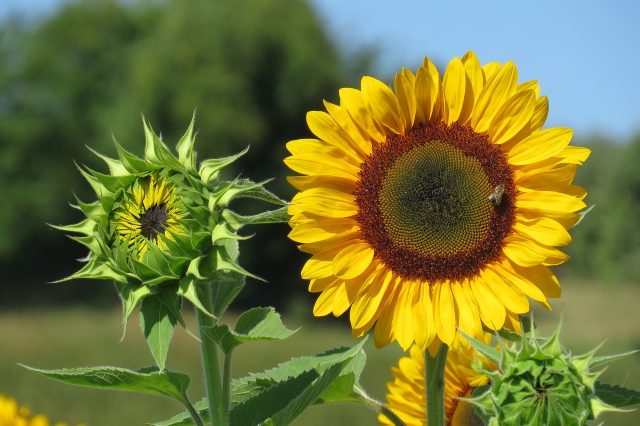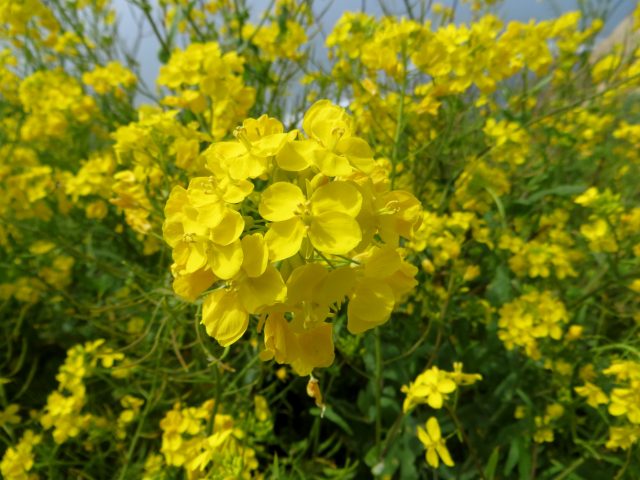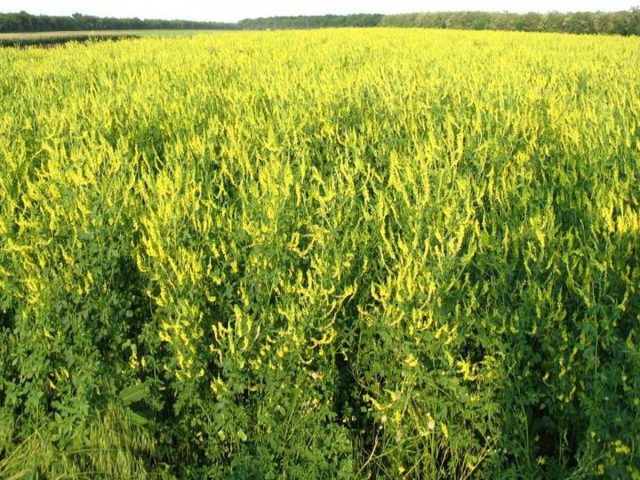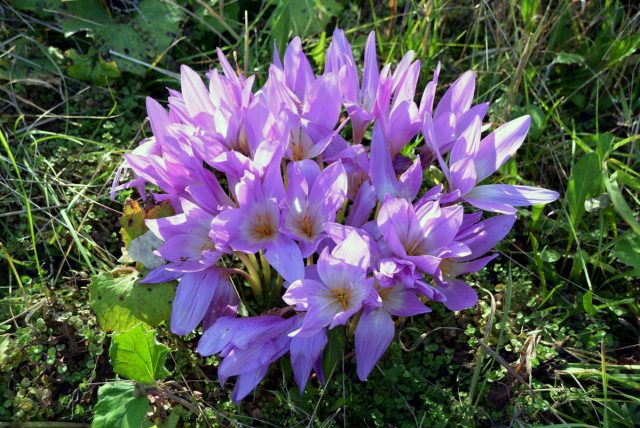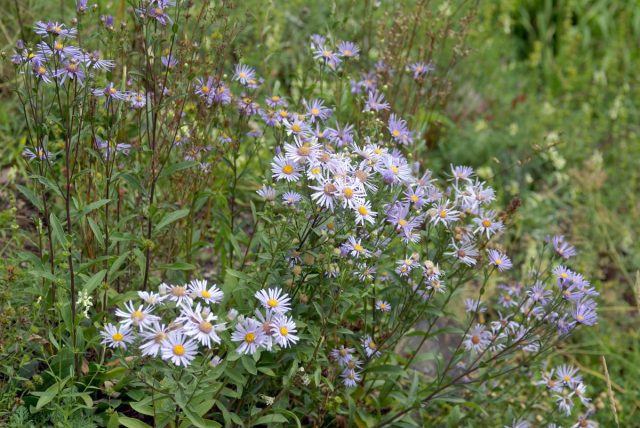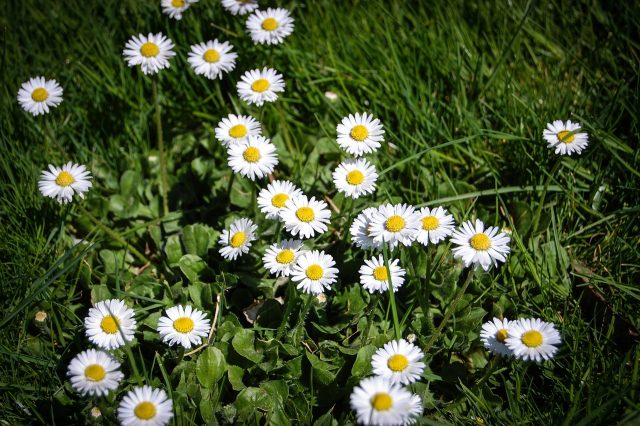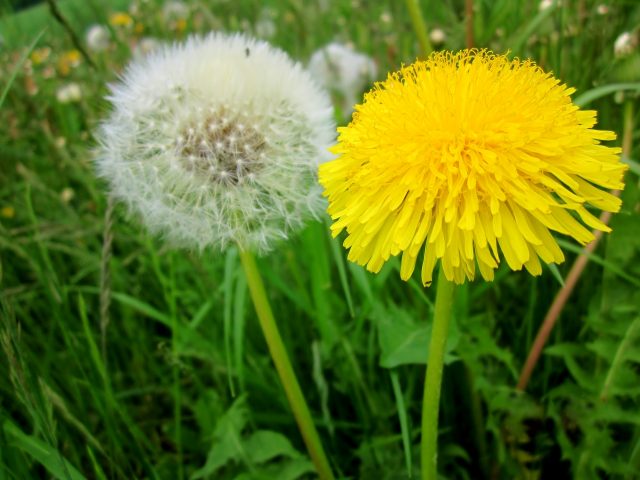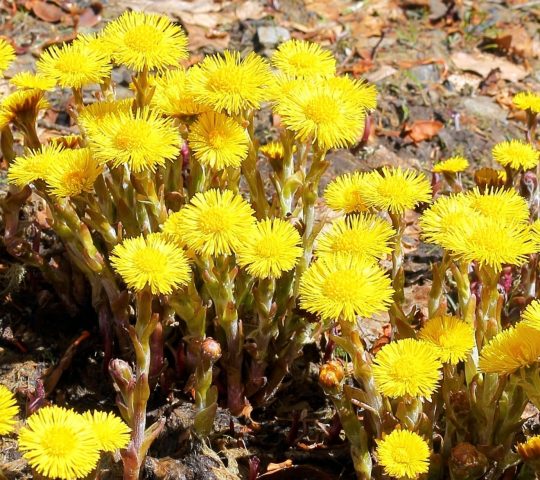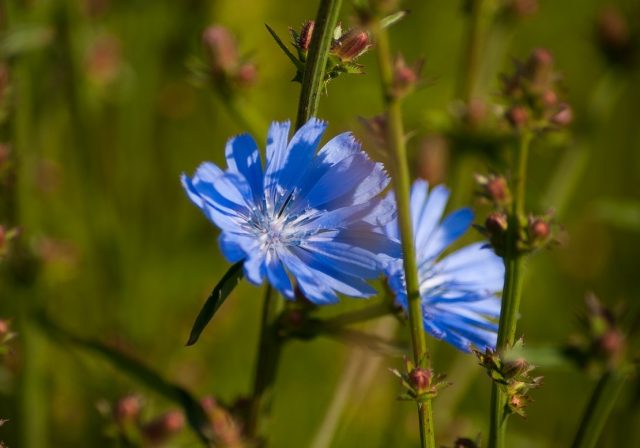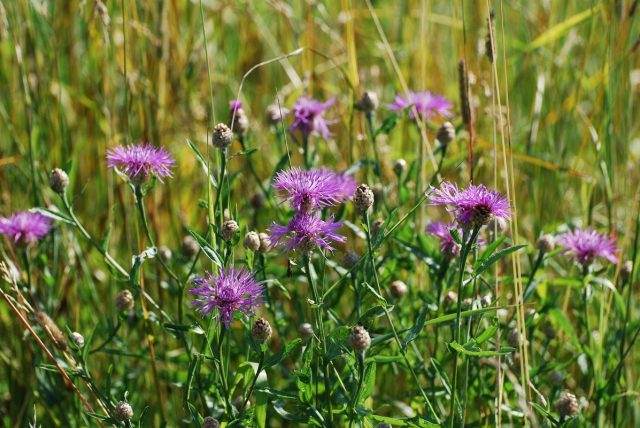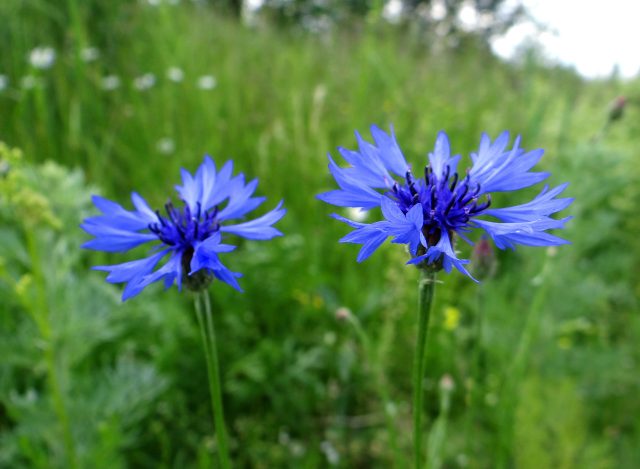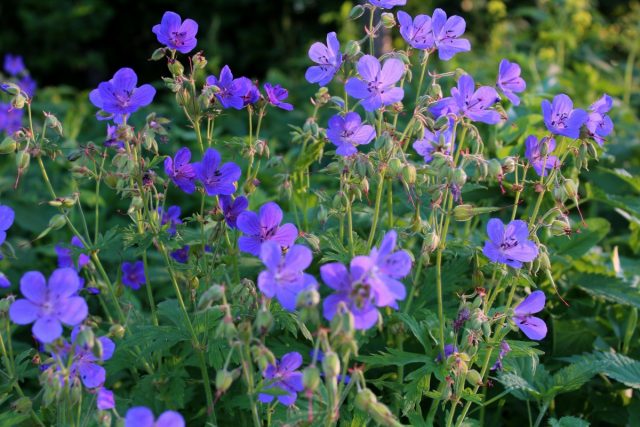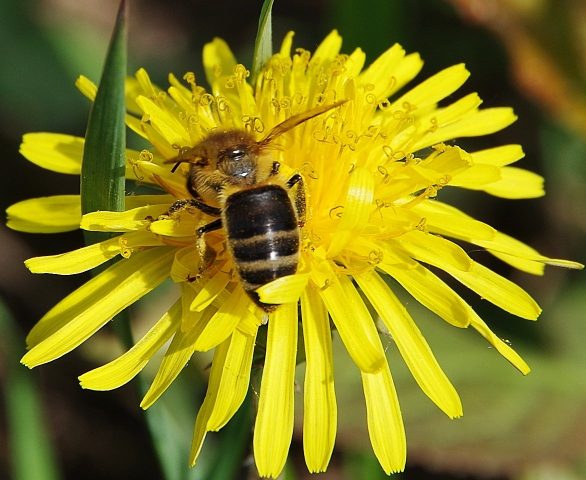Content
Flowers-honey plants with photos and names will help you choose plants that are the main suppliers of pollen and nectar for honey production. Different periods of flowering provide insects with raw materials for the entire period of honey harvest. They grow in the wild, they are also specially planted near beekeeping farms and in gardens near small home apiaries.
What flowers do bees like
In the process of collecting nectar, bees are the main pollinators of flowering plants. The diversity of flora is directly dependent on insects and butterflies feeding on nectar. To collect 1 g of honey, a bee flies around 5,000 flowers a day. Pollinates up to 15 pieces per minute. Therefore, the closer the honey plants are, the less time bees spend on flight.
There are several criteria by which insects choose the object of collecting nectar. Frequently visited flowers:
- bright yellow;
- pink;
- purple.
The main gathering of bees on blue flowers of honey plants. Bees, unlike humans, perceive the color scheme differently, except for blue. It is bright for them, as well as for us. By comparison, bees see orange as light yellow with a green tint.
The signal for the bees is the scent, the stronger the scent emitted by the flowers, the more nectar can be collected. On odorless plants, pollinators are practically not found. Flowers that are unattractive to bees are red and white. Near a purple and white lilac planted nearby, a cluster of bees will be on the first.
Garden flowers honey plants
For greater productivity, hives with bees are taken out closer to the fields with honey plants. Near stationary apiaries, the territory is sown with flowering crops that emit large amounts of pollen and nectar. In economic terms, this measure is multifunctional, plants are used for animal feed, used in industry, are raw materials for bee products.
Sunflower
Sunflower is cultivated in the Black Earth zone, in the South, Transcaucasia. A culture for industrial and agricultural purposes, oil is produced from seeds, cake is used for livestock feed. Sunflower blooms in mid-July, duration - 30 days.
A sunflower grows up to 1.8 m, forms 1 thick stem, on which large oblong leaves with jagged edges are located. At the end of the stem are large inflorescences. The core of the basket is made up of numerous small tubular flowers. On the edge of the petals are orange, their function is to attract pollinators with color and smell. Nectar collection time is the first half of the day. A strong family collects up to 4 kg of nectar per day. For the entire period, the honey flower gives 65 kg from 1 hectare.
Mustard white
Mustard is a cruciferous, dicotyledonous plant, distributed throughout Russia. In the wild, it grows on roadsides, wastelands. It is purposefully planted around apiaries, flowers give a large amount of pollen, are a honey plant. The flowering period is 30 days, from June to July.
Description of mustard:
- height 65 cm;
- herbaceous bush is formed by long, thin, tough stems branched from above;
- the foliage is intense, the leaves are elongated, feathery, formed from the middle of the stem;
- bright yellow flowers are collected in large inflorescences of 70 pcs. and more.
Collecting nectar takes all daylight hours. Plant honey productivity - 80 kg / 1 ha.
Donnik
The most widespread and productive melliferous plant belongs to the legume family. Distributed everywhere, except for the Far North. It forms flowers gradually, so the flowering time is from the beginning of July to the end of September. They are planted near large beekeeping farms to increase productivity. Sweet clover honey belongs to the elite category.
Grows up to 1.5 m. Inflorescences are bright yellow, collected from long clusters. Trifoliate leaves with sharp small teeth along the edge. Melilot blooms en masse, regardless of weather conditions, it constantly produces a large amount of nectar and pollen, has a strong aroma. Bees take raw honey all day long. Yields up to 200 kg of nectar per hectare.
A stationary apiary located on a personal backyard requires a close arrangement of honey flowers for greater honey productivity. Flowers-honey plants for planting in the garden are chosen according to the climatic characteristics of the region. To provide the bees with raw materials, the flowering time and honey productivity are taken into account. The design factor plays an important role.
Colchicum honey plant
Honey flowers for bees are formed by a perennial crocus or wintering. The representative of the lily family belongs to the latest melliferous plants. Leaves and fruits appear in spring, bloom in autumn - in early September to early November. Such development is not characteristic of bulbous, because of the unusual vegetation, the plant got its name.
External description:
- up to 15 cm high;
- perianth with fused petals;
- the shape of a light purple flower in the form of a thin, elongated funnel at the base;
- leaves are round, dark green, few in number.
In the wild, it grows in wetlands, wet meadows. A honey crop is planted in the garden especially for bees with daughter bulbs. It is difficult to determine the honey productivity, the nectar of the wintering house is part of the polyfloral (mixed) honey.
Marsh aster honey plant
Marsh aster (flooded, saline) is a biennial plant of the Compositae family. It grows in saline meadows in the southeast of the European part of the Russian Federation, Western Siberia, Crimea, and the Caucasus. The main accumulation is on the floodplains of the Kuban. A honey flower of autumn flowering from the second decade of July to the end of September.
Flower description:
- height - up to 45 cm;
- a large number of thin, branched stems are formed from the root;
- lower leaves are large in the form of an elongated oval, lanceolate with smooth edges, stem narrow, elongated;
- flower baskets of light blue color, located at the ends of the branches.
Valued as an autumn honey plant, flowering peaks in mid-September, when most of the plants have faded. Aster produces a large amount of nectar, the honey is light, transparent. Plant honey productivity - 100 kg / 1 ha.
Chamomile honey plant
The flower-honey plant for the garden - Dalmatian chamomile fits well into the landscape. It occupies a leading position in the production of nectar among the representatives of its species. Does not occur in the wild. Prefers a warm climate, common in the south, Rostov region, North Caucasus.
It blooms in early May and is the first source of nectar after the hibernation of bees. Spring honey from chamomile crystallizes quickly and is used by bees to feed and feed their offspring.
The perennial flower has a deep root system, in spring it forms numerous stems that reach up to 70 cm. Leaves are rounded, formed at the base of the stem, flowers - on its upper part. The inflorescences are medium in size with a bright yellow core and white petals along the edge.
Duration of chamomile flowering - 1 month. Honey productivity - 65 kg per hectare.
Lilac
A perennial shrub grows in the wild in Bulgaria, the South Carpathians.In Russia, lilacs are planted throughout the territory up to Western Siberia. Blooms in late April, flowering period - 65 days.
External descriptions of a honey-bearing flower:
- shrub height - up to 8 m;
- spreading crown, gray branches with a brown tint;
- leaves with a smooth surface, heart-shaped;
- inflorescences are collected in long cone-shaped brushes;
- depending on the variety, the flowers are blue, white, crimson, purple.
Lilacs release essential oils and their scent attracts bees. Honey obtained from the nectar of the bush is part of the mixed one, the productivity of the plant has not been determined.
What flowers bloom in May for bees
The main harvesting of honey by bees falls on the summer. Spring honey is produced in smaller quantities; insects do not use it for winter laying. It feeds adults, the queen and brood. May flowers-honey plants for bees growing in the wild are quite few.
Dandelion
One of the earliest spring flowers from the Aster family. Grows in the wild everywhere. Dandelion supports honey harvest after bees hibernation. Blooms in early May, flowering period within 25 days.
Perennial 20-30 cm high. From the root gives lanceolate leaves of a light green color. The inflorescence is located on an arrow-shaped stem, consists of many thin, long yellow petals.
Collecting nectar is carried out by bees in the morning. In cloudy weather, the inflorescences do not open, the dandelion does not produce nectar. From 1 hectare, 17 kg of honey is obtained. It is not stored for a long time, it has a specific bitter taste.
Mother and stepmother
Perennial plant of the Aster family. Distributed throughout Russia. Grows in high places:
- slopes of ravines;
- railway embankment;
- on the side of the road.
The growing season begins with the first spring thaw, flowering in early April, lasting 40 days.
Mother-and-stepmother has a strong creeping rhizome, from which short stems grow in the form of shoots. Each forms a bright yellow inflorescence, consisting of reed flowers along the edge, tubular in the center.
One of the first spring honey plants, so bees actively fly around the plant, not missing a single flower. Honey productivity - 18 kg / 1 ha. The honey is light, thin, with a pleasant smell and taste.
Flowers of honey plants blooming in summer
The main types of melliferous flowers begin to bloom from June to September, during the period of harvesting honey for the winter. Their variety grows throughout Russia, plants are mainly classified as weeds. Most of the species grows in meadows, river floodplains, on forest edges, on wastelands on the sides of roads.
Chicory honey plant
A perennial plant of the Asteraceae family, found throughout the territory of the Russian Federation. Chicory grows on the sides of the roads, on wastelands it can form dense thickets. The plant belongs to summer honey plants, flowering occurs in early July to mid-August, about 40-45 days.
External characteristic:
- height 150 cm;
- forms several upright branching stems;
- the lower leaves are pinnate, the surface is rough, dark green with a light central vein, stem lanceolate grows rarely, small, sharp;
- flowers are formed from the middle of the stem in the leaf axils, flower baskets are blue or blue.
Chicory is characterized by high productivity of nectar and pollen, the collection is 80 kg per hectare.
Cornflower meadow honey plant
The meadow cornflower belongs to the Aster family. Growth area:
- European;
- Non-black earth zone;
- North Caucasus.
Occurs on flat terrain, meadows, mountain slopes, forest edges and clearings. Refers to weed, if found among crops. Blossoming period is 75 days, from June to September.
External characteristics of the honey plant:
- grows up to 1 m in height;
- stems are straight, ribbed, with many shoots;
- the lower leaves are large lanceolate, the lower ones are narrow, long, pointed;
- flower baskets are single, funnel-shaped flowers along the edge, central tubular lilac-pink.
The plant produces nectar and pollen, giving 112 kg per hectare. The honey is thick, dark, does not crystallize for a long time.
Cornflower field honey plant
Field cornflower belongs to the Asteraceae family; Compositae perennial plant is widespread throughout Russia and the former CIS countries. A drought-resistant plant produces nectar during the dry season, and is often the only source of pollen when other plants stop growing due to a lack of moisture.
It grows on arid lands of the steppe zone, forest edges, roadsides. Refers to weeds with a well-developed root system. The flowering period of the honey plant is late June, early August.
Description of the honey plant:
- height - 85 cm;
- upright stems with numerous shoots;
- single flower baskets located on the top of the stems;
- tubular petals are bright blue.
1 flower contains 5 portions of pollen. Bribe of nectar from 1 hectare - 130 kg.
Meadow geranium honey plant
Herbaceous perennial, meadow geranium is found near roads, on the edges, grows in meadows, along the banks of reservoirs. The flowering period is 70 days, from June to August.
Grows in the form of a low herbaceous bush, numerous flowers, small size, bright blue or purple. As a rule, geranium grows away from the apiary.
The plant's honey productivity is low - 52 kg / 1 ha, with the condition of continuous planting.
Kulbaba
Kulbaba belongs to the Aster family. Perennial honey plant grows in the Caucasus and the European part of Russia in meadows and forest edges. Blooms from June to early October.
Flower stems are upright, reaching a height of 65 cm. Basket-shaped inflorescences are located at the top of the stem. The flowers are ligulate, yellow. The honey flower produces nectar even at an air temperature of +50 C. The value of the plant is that only a few flowering honey plants remain in the fall. Productivity - 100 kg / 1 ha.
Chernogolovka
Chernogolovka is widespread throughout the territory of the Russian Federation, grows along river banks, in shrub thickets, in meadows, in wetlands. The plant blooms within a month, from June to July.
Perennial melliferous plant reaches a height of 35 cm. The rhizome is creeping, the vegetation of the plant is fast. Chernogolovka is rapidly occupying empty territories. The flowers are blue or purple, collected in inflorescences in the form of an ear. The plant belongs to good honey plants, bees collect nectar and pollen from the plant all day. The honey productivity of the blackhead is 95 kg per hectare.
Mint
Peppermint belongs to the lucifer family. A perennial plant grows up to 0.5 m, there are specimens no higher than 20 cm. Refers to weeds. Mint is found in fields, among plantings, in the boundary part of vegetable gardens. Mint thickets are located along the banks of rivers, old channels, roadsides, in empty wet areas. Flowering time is July-September.
A honey plant with dense foliage on numerous stems. The flowers are light pink, collected in dense whorls in the shape of an elongated oval. Inflorescences form in the axils of the upper leaves. The honey plant in mint is long-lasting, but small - 62 kg / 1 ha.
Conclusion
Flowers-honey plants with photos and names will help you decide on the choice for planting in the garden, so that the bees are provided with nectar from spring to autumn. The best species for mass planting in a large area near beekeeping farms are presented. The general characteristics of wild-growing plants will help determine the parking space for mobile apiaries.
